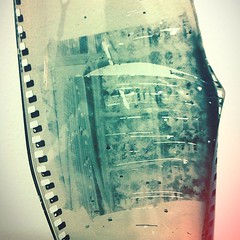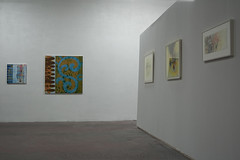Definitions are sometimes a very tricky thing when it comes to art. For instance, what exactly defines “time-based” art? Is it just anything with a beginning and an ending? Does any movie or video qualify? Is there a separation between time-based art and performance art or theater? To further explore this genre, here is our definition of what is considered time-based.
Time based art is a cluster of units dealing with the complex multiplicity of artistic forms which use the passage of and the manipulation of time as the essential element. Time Based Art includes key concepts in time based art with specific reference to experimental film, video art and installation, sound, performance and multimedia computing. Time based art develops critical awareness by close study of histories of the moving image and the expressive use of technology and the human body.

Gathering at the start of the event, “Three-by-Six, 2012.”
SUBMISSION GUIDELINES: Three-by-Six (“3×6”)
Most recently I picked up the book, “Radical Prototypes, Judith Rodenbeck, [who] argues for a more complex etiology. Allan Kaprow coined the term in 1958 to name a new collage form of performance, calling happenings ‘radical prototypes’ of performance art. ‘Happenings’ have pop connotations that conjure up 1960s youth culture and hippies in public, joyful rebellion. Scholars, meanwhile, locate happenings in a genealogy of avant-garde performance that descends from futurism, surrealism, and Dada through the action painting of the 1950s.”
“Happenings” are a type of time-based art in which the audience is very often a participating component.
One would hope that time-based work in its various forms are alive and well, although it seems I have come into recent contact with artists who have no idea what any type of time-based work is, or could be. Let’s expand our creative horizons!
“The line between the Happening and daily life should be kept as fluid, and perhaps indistinct, as possible.”


 Three-by-Six (“3×6”) is a recurring media arts event in Miami, Florida; a cross between an art show and a film festival. On each selected evening, six curated short video, film, performance, sound, or other time-based combination works will be presented.
Three-by-Six (“3×6”) is a recurring media arts event in Miami, Florida; a cross between an art show and a film festival. On each selected evening, six curated short video, film, performance, sound, or other time-based combination works will be presented.

